Tom's Guide Verdict
The Ride1Up Roadster V2 is a fun, affordable, and efficient commuter best for use on flat or rolling terrain.
Pros
- +
Light
- +
Sleek
- +
Doesn’t look like an e-bike
- +
Fun, zippy ride
- +
A great, inexpensive option for city commuting
Cons
- -
Would prefer disc brakes over the included rim brakes
- -
LCD unit is difficult to read
Why you can trust Tom's Guide
Weight: 33 lbs
Motor: 500W peak, 350W nominal hub, 40Nm of torque
Max assist speed: up to 24mph
Battery: 36V, 7Ah Samsung 35e Cells
Maximum advertised range: 30 miles
Charge time: Up to 4 hours
Drivetrain: 64/20T singlespeed Toptrans Belt Drive
Max weight capacity: 275 lbs
Electric bikes often have a distinctive look; the battery and motor mark them out as more tech-heavy than regular bikes. But Ride1Up’s Roadster V2 pulls off a magical combination, looking like a regular, non-motorized commuter bike, but it with plenty of assist power and battery life.
It’s light too, and surprisingly zippy and fun to ride. On top of all that, it’s quite affordable, making it one of the best budget electric bikes. There are some tradeoffs: most notably, it’s missing fancy bits like hydraulic disc brakes, a removable battery, and a big head unit that displays lots of information.
But for daily commutes on flat or rolling terrain, the Roadster V2 quickly proves itself as a capable, fun, and sleek bike that’s easy to ride with or without the motor assist engaged.
Ride1Up Roadster V2 review: price and availability
The Ride1Up Roadster V2 costs $1,095 and is available for purchase through Ride1Up’s website.
Shipping is free within the contiguous United States (or from $600 to Hawaii and Alaska); it costs $100 for shipping to Canada. Ride1Up offers a 30-day trial. Within that window, you can send the bike back if you’re not satisfied with it. After that, you’re covered by a 1-year warranty against manufacturer defects.
If you're looking to spread the cost, you can buy the bike through a payment plan with Affirm or use PayPal's financing options.
Ride1Up Roadster V2 review: design
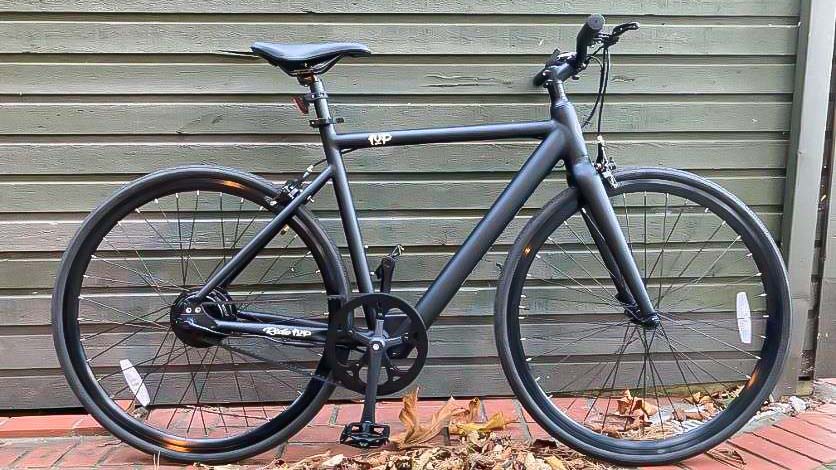
The Roadster V2 is available in two sizes: 52cm and 58cm. That’s a pretty big range that can make it tricky to find the right size. I am 5’11” and chose the 58cm size. It felt just right, but if you’re any shorter than 5’9” you’ll likely find this size too big.
Get instant access to breaking news, the hottest reviews, great deals and helpful tips.
And the 52cm size will almost certainly be too small for you. If possible, it’s best to test ride the sizes before you purchase. If you can’t do that, measure yourself carefully and compare to the geometry charts posted on Ride1Up’s website.
The aluminum frame comes in three color options. The battery is integrated into the down tube of the frame and is not removable. It’s quite thin, and consequently the Roadster V2 hardly looks like an e-bike at all. The motor is built into the rear-hub.
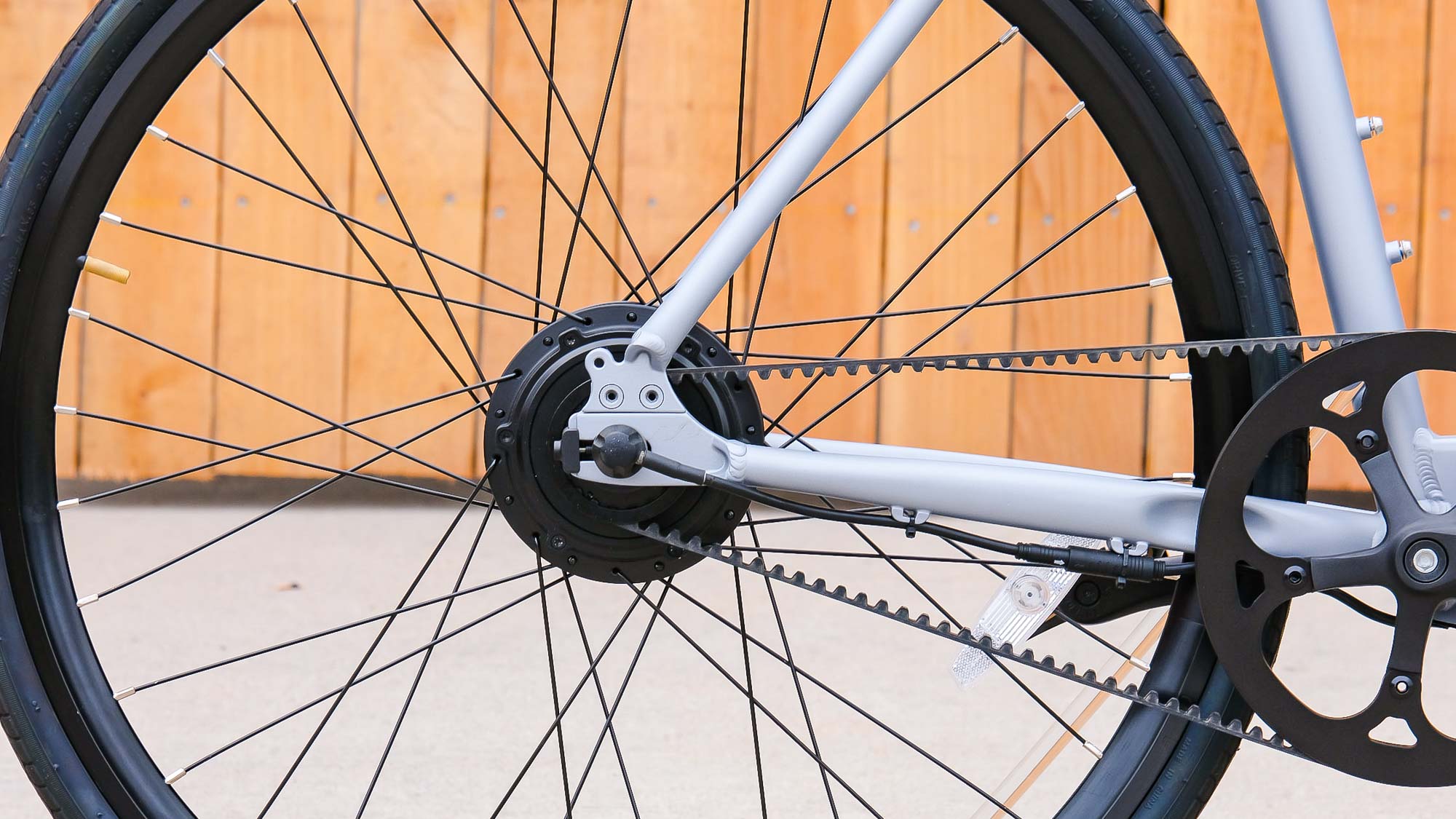
The Roadster V2 is a single-speed bike, which means there’s no gears to shift through. It also uses a belt drive system rather than a chain, which operates very quietly.

The only other obvious indication that the Roadster V2 is an e-bike is the small handlebar-mounted LCD display. It’s mounted near the left grip and offers basic information like speed, battery life, and assist mode. This is also where you turn the bike on and adjust your assist level. The unit has touch buttons that allow you to toggle modes.

The left brake lever has a bell integrated into it, which is a nice touch. It’s easy to reach and rings out loudly enough to get the notice of folks in front of you without scaring them out of their shoes.
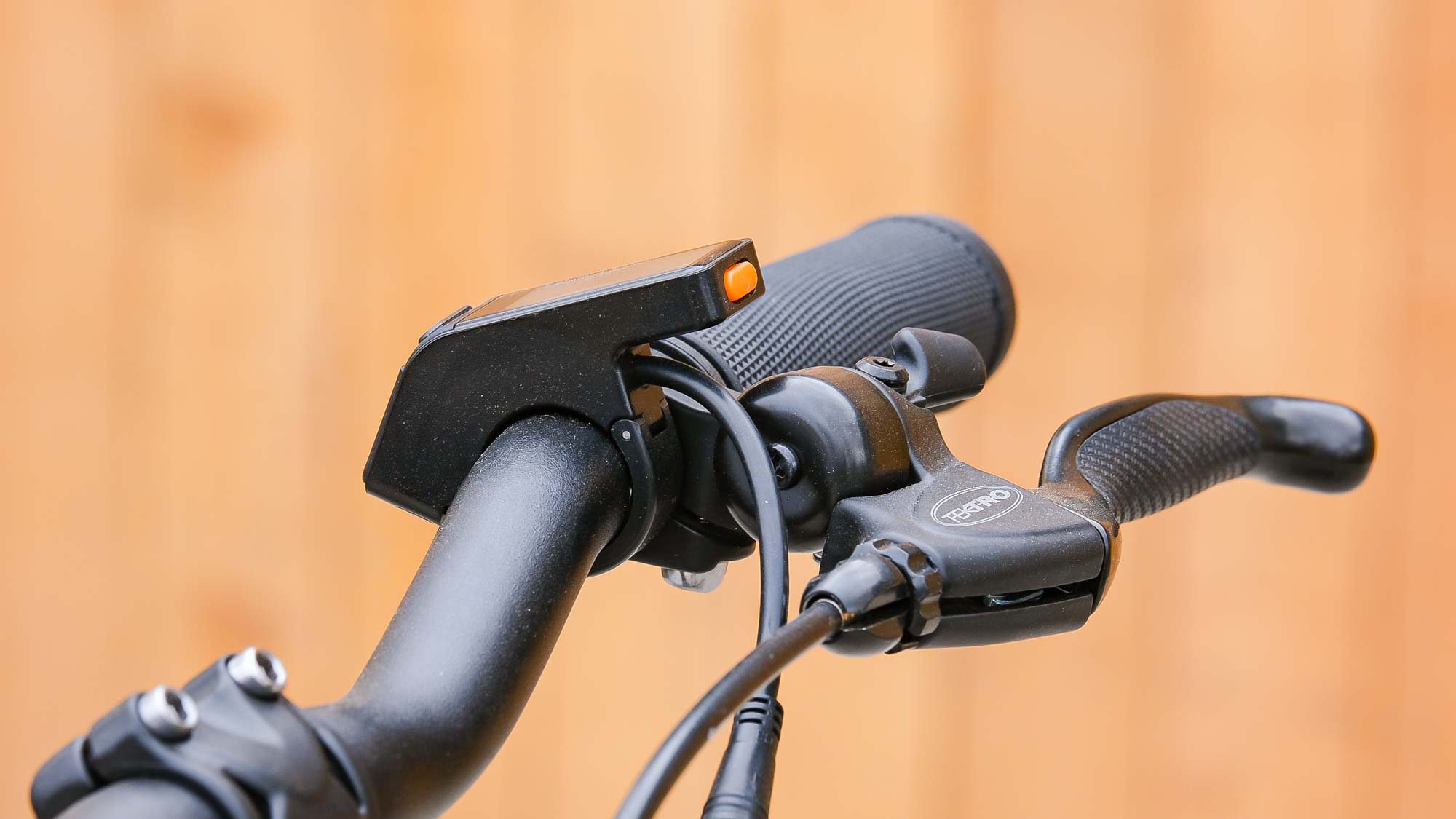
The Roadster V2 rolls on 700c wheels shod in road-oriented tires. They do have some tread to them, so if you had to go off-road onto light gravel, you could do that. But the tires certainly aren’t made for a lot of that type of riding.
Ride1Up Roadster V2 review: performance
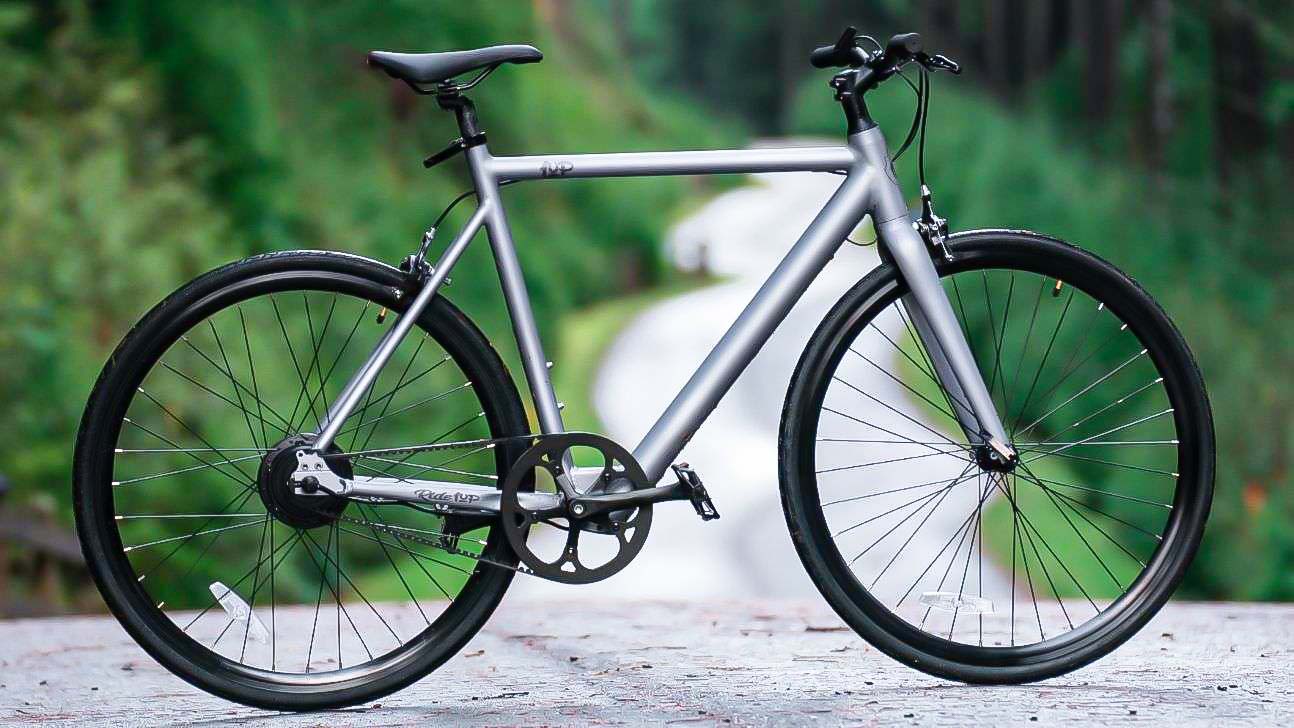
The Roadster V2 feels like a bike. That’s not damning with faint praise; it’s actually quite difficult to make an e-bike feel like a normal bike. The added weight of a motor and battery can negatively affect handling, but that doesn’t seem to be the case here.
The Roadster V2 is a fun and zippy ride that feels largely like a non-motorized bike. Of course, when you need it, the pedal assist is there to get you up hills. It’s pretty smooth and definitely powerful enough for most flat and rolling terrain, though it does take a second to kick in.
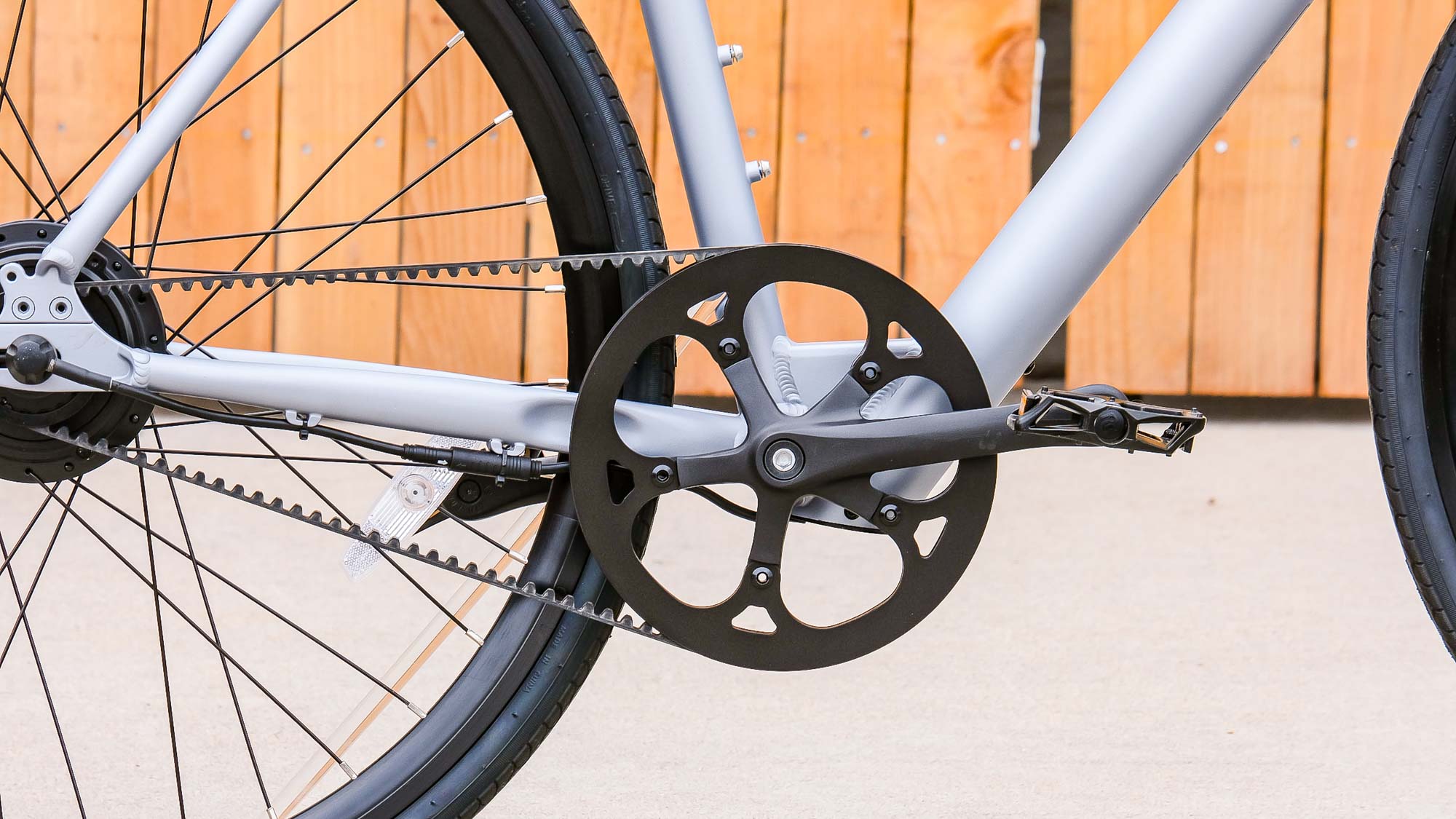
The diminutive LCD screen mounted on the handlebar doesn’t advertise “I’m an e-bike!” either, which is again quite nice if you’re after a sleek-looking package.
Because the screen is small, and it does glare quite a bit in direct sunlight, it can be difficult to see the information presented there. Still, it’s small and easy to use, which will be more than enough of a benefit for most riders.
The Roadster V2 does have a few interesting spec choices that might be a put-off for some riders. For starters, Ride1Up includes rim brakes rather than hydraulic disc brakes. That’s likely to save weight and cost.
But the tradeoff is that braking might not be as strong, particularly in wet conditions. The rim brakes on the Roadster V2 performed just fine in my testing, but I didn’t ride in any wet or snowy conditions where disc brakes would very likely outshine them.
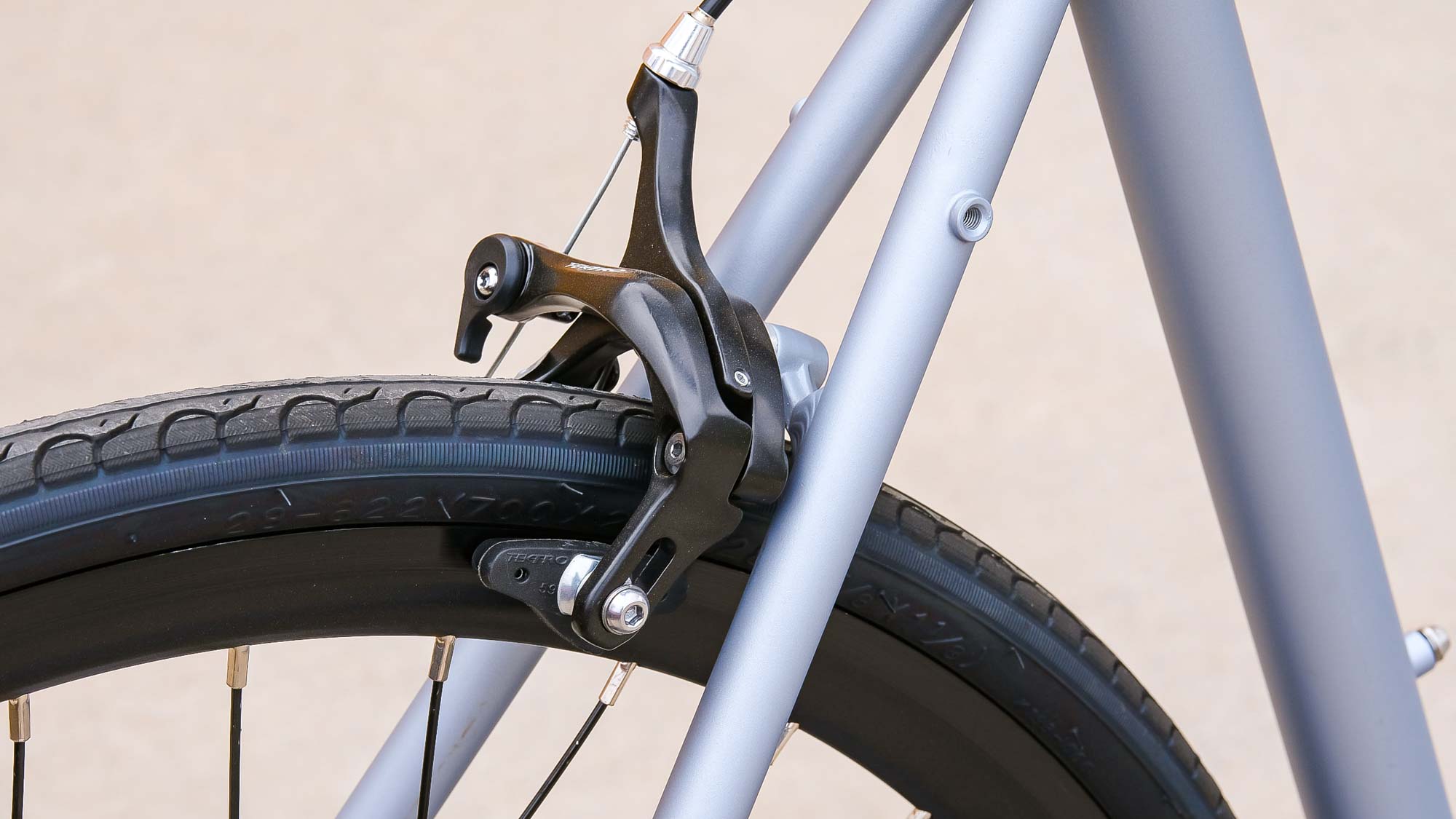
The handlebar is also quite narrow. This feels like a nod to the look and feel of messenger bikes, which often had cut-down bars to make it easier to zip through traffic. If you’re looking for more stability, you’ll probably want to swap these out. I didn’t find them problematic in my riding, but narrower bars can make the bike’s handling more difficult to control for some riders.
I rode the Roadster V2 with the motor on and off. In both situations the ride quality is quite fun and comfortable. The bike is easy to pedal with the motor off, making it a good option should you find yourself with a dead battery at any point.
The hub motor is, however, plagued with the same problem I have encountered in just about all hub motors I’ve tested: It’s just not powerful enough to get you started from a dead stop on steep pitches. You’ll have to give it a good push to get going, and since the Roadster V2 is a singlespeed, you won’t have additional gears to bail you out.

I did manage to knock the front wheel out of true on the very first ride. I hit a small crack in the road and got quite a wobble in the rim. This is easily fixable but probably shouldn’t happen on the very first ride on reasonably smooth terrain.
Otherwise I found little to complain about here. The Roadster V2 is a fun and efficient bike for commuting on flat and rolling terrain.
Ride1Up Roadster V2 review: battery life
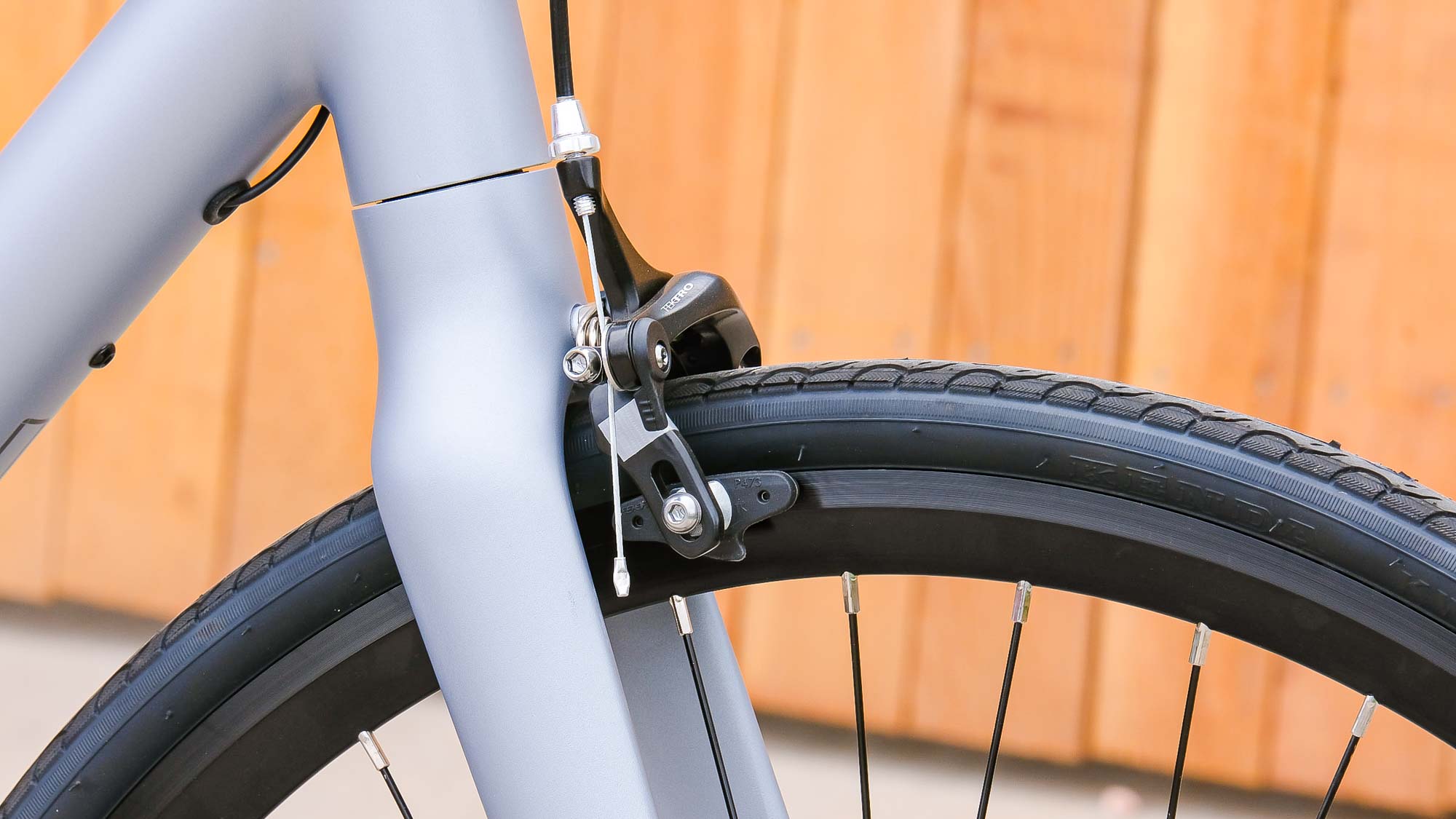
Ride1Up advertises a maximum range of 20-30 miles, depending on the assist level you’ll be using and the terrain on which you’ll be riding.
My first ride on the Roadster V2 was four miles roundtrip, and I mostly used the highest assist setting. The battery indicator still indicated full life after those four miles. After I put about eight miles on the bike, I had worked through less than a quarter of the battery’s life, so Ride1Up’s range calculations appear to be accurate.
Should you buy the Ride1Up Roadster V2?
If you're after an electric bike that can handle flat, rolling commutes, the Ride1Up Roadster V2 is an excellent choice. Although, if you carry a lot of gear, you might be better off on the Ride1Up Core5, the Propella 7S, or the Aventon Soltera.
The Propella 7S tackles steeper pitches with greater ease, while the Core5, with its wider tyres, is designed for more uneven terrain. If you just aren't sold on the Roadster V2's design, the Soltera is evenly matched, but with a different aesthetic.
However, I would not hesitate to recommend the Roadster V2 to a city dweller looking for a simple, functional, and fun bike to get them back and forth to work, especially if the office is up a flight of stairs or two.

Dan Cavallari is the former technical editor for VeloNews Magazine, who currently reviews electric bikes, bike lights, and other bike accessories for Tom's Guide. In addition to VeloNews, his work has appeared in Triathlete Magazine, Rouleur Magazine, CyclingTips.com, Road Bike Action, Mountain Bike Action, CycleVolta.com, Tomsguide.com, and much more. Dan also hosts two podcasts on his site, Slow Guy on the Fast Ride: One is about cycling and other outdoor activities, while the other looks at mental health issues. Most recently, Dan also covered the 2022 Tour de France. Dan lives outside of Denver, Colorado with his family.

